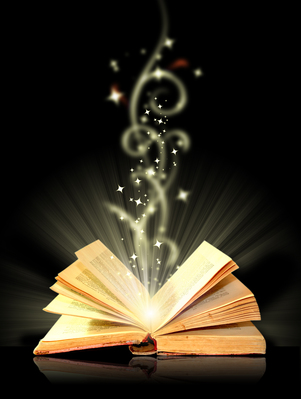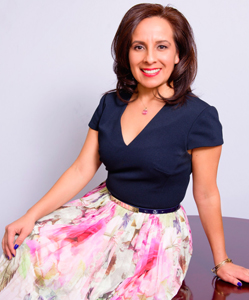What is the definition of plot?
 In simple terms it is just whatever happens in a story. Every story or novel has one. Plot is something that is carried forward using significant events throughout a story. Just doing something in a story is not necessarily considered a plot if it does not advance the story in some way. It is the thing that characters do, the things they think about, the things that they say or the things that they feel while at the same time moving the story forward in some form or fashion. As a writer developing a plot, it’s important to remember that the plot should provide some kind of value to the reader.
In simple terms it is just whatever happens in a story. Every story or novel has one. Plot is something that is carried forward using significant events throughout a story. Just doing something in a story is not necessarily considered a plot if it does not advance the story in some way. It is the thing that characters do, the things they think about, the things that they say or the things that they feel while at the same time moving the story forward in some form or fashion. As a writer developing a plot, it’s important to remember that the plot should provide some kind of value to the reader.
So how are plots created?
Plots can come from many sources. A plot can come from a dialogue that you’ve heard or a character that you’ve read about. Plot can be developed from a story that was told to you as a child or it can come from a conversation with a stranger. It can also come from a story that a co-worker or friend has disclosed to you regarding their family. It could also be based on your own family history. As you can see, a plot can be developed from just about any source. It is up to the writer to use his creative imagination and turn a plot into a literary work. But before you can turn a simple plot into a literary piece you must ask yourself a few basic questions.
- Is this story yours to tell? In other words, are you writing about something that you find is of profound importance to you? Is this plot something that will lend itself to many turns and twists? You should not write about something if your heart isn’t in it. Of course you can research subjects and learn about things that are not familiar; however, make sure that it’s something that can carry through the whole story or novel and something that interests you. If a topic isn’t really significant to you or doesn’t really grab your interest it will show in your writing.
- Is the story a personal story of yours? It is great to write and incorporate personal experiences into your stories but you also have to be careful about being so subjective that you bore your reader. Something may be so personal that it touches you profoundly; however, a reader may not be able to relate to the story. For instance you may be an environmentalist who is passionate about our oceans and are committed to saving every living thing that lives in that abyss; however, not everyone carries your enthusiasm as an environmentalist. You have to be careful about focusing your writing on things that may be too exotic and may not interest the average person – it is being aware of those personal blind spots.
- Is the story going somewhere? Anyone can have a story but you have to make sure that the story is dynamic and that it will lend itself to future development. Does your plot lend itself to providing substantial information for a dynamic beginning, middle or end? Your plot has to carry through from start to finish. Does the plot allow you to create scenes and keep the story moving forward?
- Ask yourself what is at stake by using a particular plot. Is the plot so dry that it will not go too far? Is the plot dynamic enough to create tension and to keep the reader interested? You should be able to express the plot in one or two sentences.
Finding that perfect plot can be complicated. The difficult part is ensuring that it meets all the criteria above yet it has to be dynamic. Most importantly it must move the story forward.
A good plot should have a great opening. As a writer, you can choose to begin your story at the beginning of an event or mid way through an event. If you choose to begin at the beginning of an event, your story may be easier in that the events are in chronological order and the reader may find it easier to follow. On the other hand, if you choose to begin mid way of a conflict you may have to use exposition to get the reader on board or possibly using a flashback strategy. When using narrative you have to be careful that the reader isn’t bored and that you don’t include too much information at once. When using the flashback technique, you have to be careful not to lose the reader or momentum of the story because this technique disrupts the storyline and causes the reader to alternate between present and past. Both can be successful if used correctly; however, present action is still usually more effective. Just make sure that your plot is concrete, clear and well established.
What is included in a plot?
 One of the first things to do as a writer is to define your plot criteria. Determining and reviewing scenes within the story is also an essential part to getting your story well on its way to completion. It is also determining whether the scenes that you’ve chosen are truly scenes or just “fluff” that’s been added to the story. A scene should be full of action and should carry the story forward. If a particular scene does not add substance to the story then it must be eliminated or reevaluated. That is where the skill of a writer comes into play.
One of the first things to do as a writer is to define your plot criteria. Determining and reviewing scenes within the story is also an essential part to getting your story well on its way to completion. It is also determining whether the scenes that you’ve chosen are truly scenes or just “fluff” that’s been added to the story. A scene should be full of action and should carry the story forward. If a particular scene does not add substance to the story then it must be eliminated or reevaluated. That is where the skill of a writer comes into play.
Over two thousand years ago Aristotle gave us the six elements of drama (playwriting) and that theory is still in existence today. These elements can also apply when writing a book or novel. The six elements are:
- Character – This is simply the people that you have included in your story that will help bring your story to life.
- Action – Basically this is your plot. This is the action that will move your story forward.
- Ideas – This is the theme of your story. In other words, what is your story about? What do you want to convey to your reader? This central theme should be included in every part of your story or novel from start to finish.
- Language – This is the method that you use to get your story told. In other words, how do your characters speak? Do they speak with an accent, slur or do they show a bias. It is central to your character.
- Music – If appropriate don’t be afraid to include this in your play or drama as it could heighten and add emotion to your story.
- Spectacle – This allows the writer to add some flair to the piece. It can be a magical event or a specific dance or laughter at a funeral. Whatever the writer chooses it should be volatile in some form or other. It should be something that will capture your audience and more likely is unexpected.
Combining Dramatic Elements and Basic Plots
If you combine the six dramatic elements and the seven basic plots you end up with a solid foundation for writing and communicating a great story on paper or the theatre. The seven basic plots are:
- The Rags to Riches – This is usually where your protagonist will start with nothing and will quickly succeed through some type of intervention. Many times it involves your protagonist defeating some kind of foe or crossing a horrendous obstacle to get to success.
- Voyage and Return – This is where your protagonist has undergone some type of a journey and during that process discovers something about him or her. In the end your protagonist is usually the better for it.
- Tragedy – This is where your protagonist has experienced a great downfall and it usually has to do with his or her own doing to cause this great misfortune. Sometimes the protagonist can come back from it and sometimes they can’t. It encompasses a moving journey for the reader. It is up to the writer to use their writing skills to bring the reader to an emotional experience.
- Rebirth – This is where your protagonist is transposed into an alternative world or place. It is usually not a good place and has occurred either through self provocation or an outside force; however, the end result is the same. Eventually the protagonist overcomes the obstacle at hand because nine times out of ten it is in his own consciousness that is working against him.
- Overcoming the Monster – This is where the protagonist will overcome some form of evil. It could be a well known monster such as a vampire or Dracula-type persona but it could also simply be a person.
- Comedy – In modern writing this has come to mean something that is funny; however, Aristotle defined this as showing people in a worse light than they really are. Modern writing interpretation of this type of plot is “anything that makes an audience laugh.”
- The Quest – This is where your protagonist or hero is on a venture to attain a goal of some sort. The intricate plot will weave obstacles along the way.
The combination of the six dramatic elements of play writing and the seven standard plots is what creates great writing and plots. It is important to keep these in mind as you develop your stories and keep the reader charmed to the end of your story or novel.




